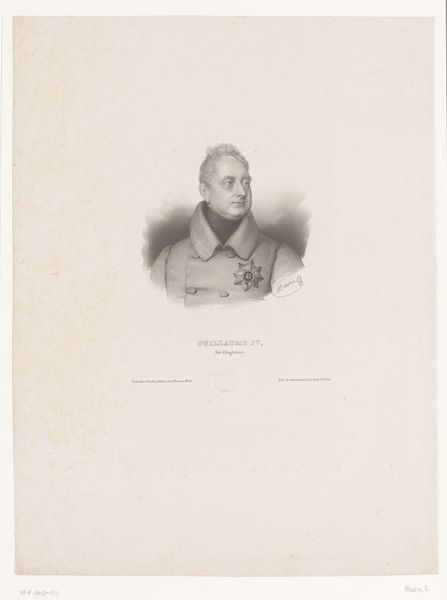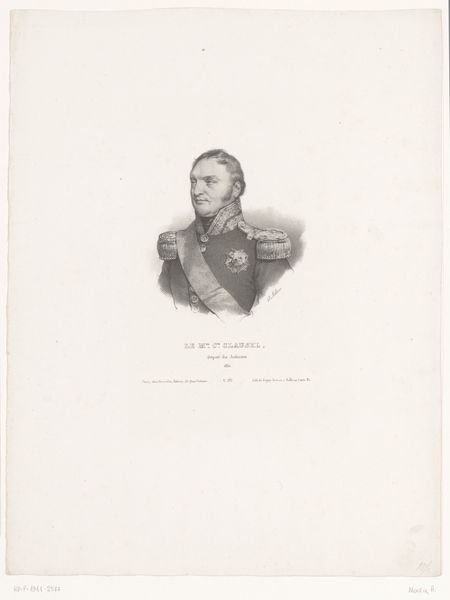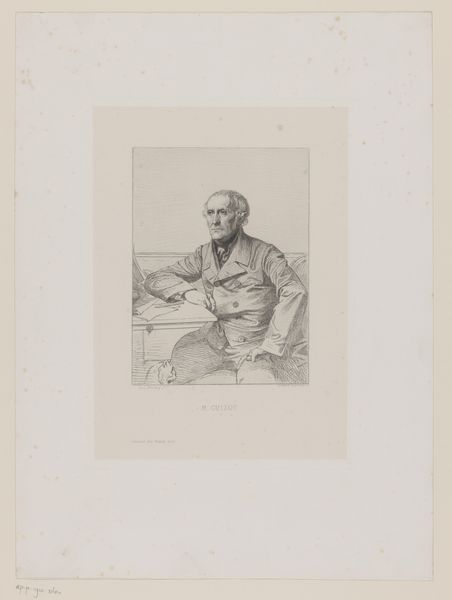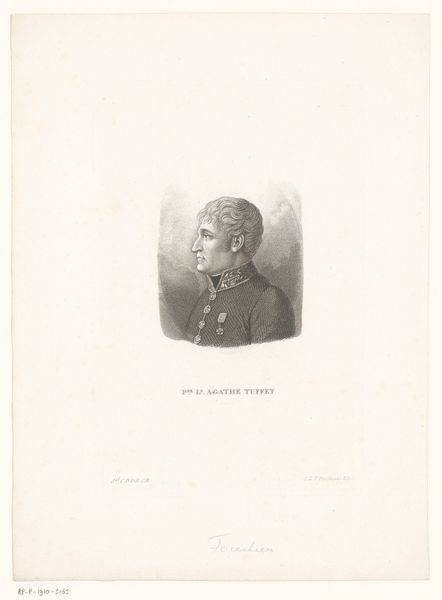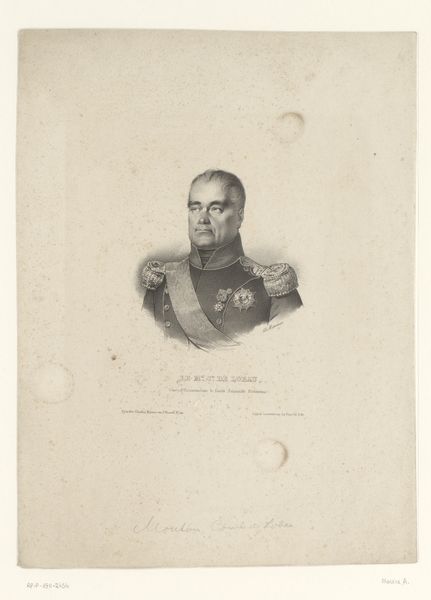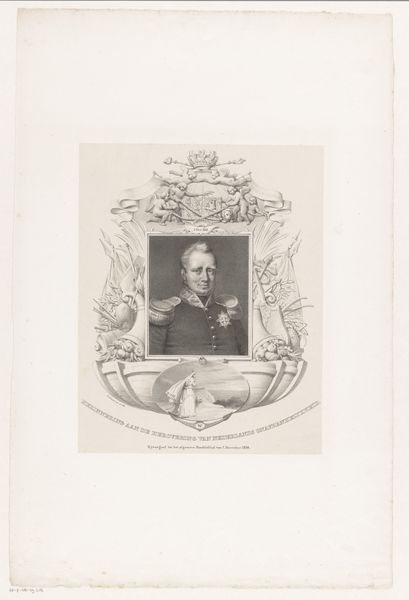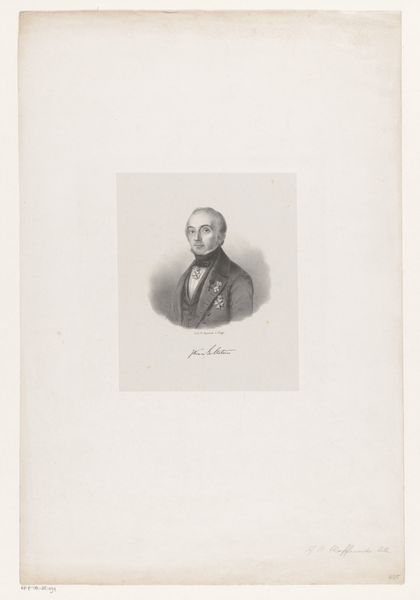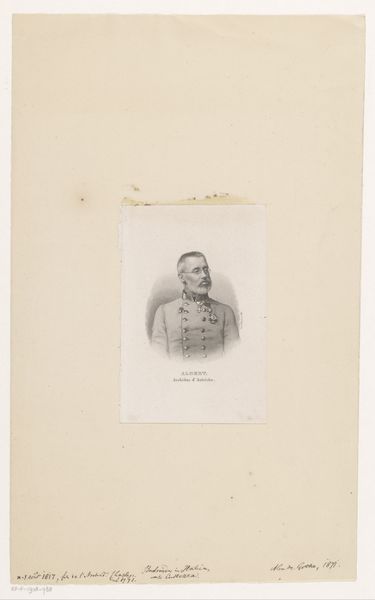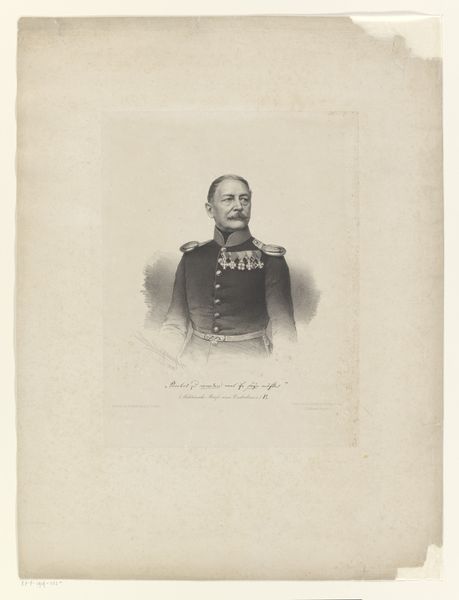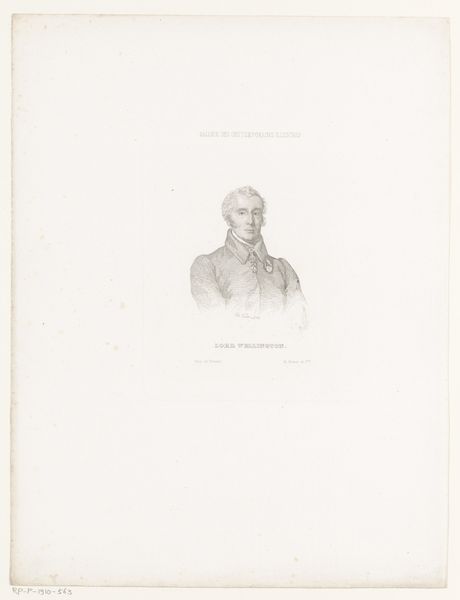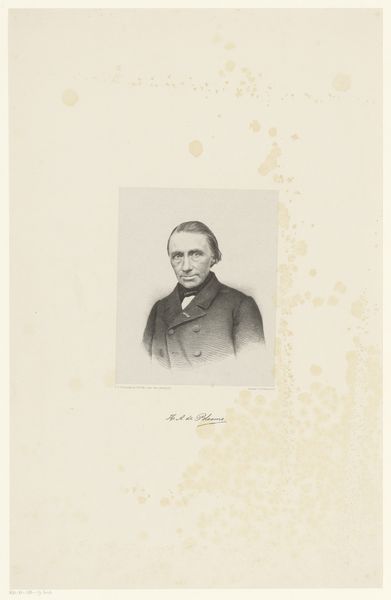
drawing, print, paper, pencil
#
portrait
#
pencil drawn
#
drawing
#
aged paper
#
light pencil work
# print
#
pencil sketch
#
paper
#
pencil drawing
#
pencil
#
pencil work
Dimensions: height 365 mm, width 275 mm
Copyright: Rijks Museum: Open Domain
Curator: Here we have a print dating from between 1822 and 1845: a portrait of Jan van den Velden. It's rendered primarily in pencil, on paper. Editor: The sepia tones and fine hatching give it a real gravitas, don't they? I can almost smell the history baked into the paper itself. There is also something about this figure of a white, older, decorated male, which I wonder how the passage of time influences the way the contemporary viewer judges its value and impact. Curator: The choice of medium – humble pencil – seems an intentional contrast to the high status implied by the naval uniform, those ornate epaulettes, and the star. It speaks of a certain … restrained power. I find that it suggests a visual narrative, that is, it may be alluding to a common struggle of the average individual against power. Editor: Exactly! It's a performance of authority. Those details are deliberate assertions of rank and perhaps even social dominance within a strict hierarchy. How might this symbol, in this specific historical and artistic context, enforce social stratification, even today? Curator: Beyond its overt symbolism of power and position, it’s crucial to understand how portraiture, in general, creates meaning for its audience. I’m fascinated by how repeated images of people become embedded within our shared visual memory. In this portrait of van den Velden, it gives the sense of timelessness in one individual that seems both ordinary yet enduring. Editor: I can’t ignore the potential implications here. How has this representation of power, influence, and control contributed to systemic inequalities? Doesn’t it suggest more profound questions regarding race and class, still active today, linked with historic visual codes of colonialism? It would seem problematic, wouldn't you say? Curator: Maybe. However, what the artist might be attempting is something quite specific by way of cultural codes, embedded with signs which require a certain deciphering from the audience of the day to achieve a status that transcends class, status or positionality. These symbols must have represented ideals that still resonate today, albeit with an overlay of critique. Editor: Food for thought. I'm struck by the continued relevance of questioning not just what is presented but how it subtly reinforces specific narratives. Curator: And I by how seemingly straightforward portraiture holds multiple, sometimes conflicting, layers of symbolic communication across generations.
Comments
No comments
Be the first to comment and join the conversation on the ultimate creative platform.
